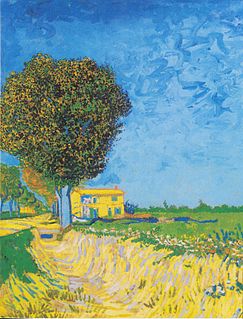 W
WCamel is a painting by Swiss artist Paul Klee, made in 1920, in the collection of the Kunstsammlung Nordrhein-Westfalen in Düsseldorf, Germany.
 W
WConcentric Group is a painting by Oskar Schlemmer, from 1925.
 W
WDiana Bathing with her Nymphs with Actaeon and Callisto is a 1634 painting by the Dutch painter Rembrandt van Rijn. It is now on show in the Salm-Salm princely collection in the Wasserburg Anholt in Anholt, Germany.
 W
WEarly Bourgeois Revolution in Germany, also known as the Peasants' War Panorama (Bauernkriegspanorama), is a monumental painting by the East German painter Werner Tübke, executed from 1976 to 1987. It spans 14 metres (46 ft) by 123 metres (404 ft) and depicts a circular panorama of the Battle of Frankenhausen, fought on 15 May 1525 during the German Peasants' War. The painting has more than 3000 characters.
 W
WFlowers in a glass vase on a partly draped stone ledge is a circa 1667 floral painting by Nicolaes van Verendael in the collection of the Suermondt-Ludwig-Museum.
 W
WFlowers in a Wan-Li Vase is a circa 1620s floral painting by Balthasar van der Ast in the collection of the Suermondt-Ludwig-Museum.
 W
WHutten's Grave is an 1823 oil on canvas painting by Caspar David Friedrich, showing a man in Lützow Free Corps uniform standing by the grave of the Renaissance poet and humanist Ulrich von Hutten. It is now in the Klassik Stiftung Weimar's collection and on show in the Schlossmuseum at the Stadtschloss Weimar.
 W
WThe King Drinks or The Bean King may refer to one of ten surviving works of the same title by Jacob Jordaens:The King Drinks (Brussels), one of two in that museum The King Drinks Arenberg Brunswick Kassel Chatsworth House Paris (Louvre) Lille Valenciennes Vienna
 W
WLandscape with Grotto is an oil on panel painting by Flemish painter Joos de Momper. The painting was completed in the 1610s, possibly in 1616, and is currently housed at the Rheinisches Landesmuseum in Bonn.
 W
WA Lane Near Arles was painted by Vincent van Gogh in 1888, while he was living in Arles. It depicts a lane surrounded by trees running between the fields outside Arles, France.
 W
WLaughing Fisherboy is a painting by the Dutch Golden Age painter Frans Hals, painted in 1628 and now in Westphalia.
 W
WLaw and Gospel is one of a number of thematically linked, allegorical panel paintings by Lucas Cranach the Elder from about 1529. The paintings, intended to illustrate Lutheran ideas of salvation, are exemplars of Lutheran Merkbilder, which were simple, didactic illustrations of Christian doctrine.
 W
WMountain Scene with Bridges is an oil on oak panel painting by Flemish painter Joos de Momper.
 W
WPortrait of Margarete Brömsen is a painting by the German Baroque painter Michael Conrad Hirt, painted in 1642 and now in St. Anne's Museum. It is considered a wedding portrait, but a pendant of her husband, Diedrich von Brömsen, is unknown.
 W
WSelf-Portrait on the sixth wedding anniversary (German: Selbstbildnis am 6. Hochzeitstag) is a painting by the German painter Paula Modersohn-Becker, one of the most important early expressionists, from the time of her stay in Paris in 1906.
 W
WStill-Life with Fruits is a series of still life paintings produced between 1871 and 1872 by Gustave Courbet, marking his return to painting after the silence forced on him by the Franco-Prussian War, the Paris Commune, imprisonment and illness.
 W
WThe Stuppach Madonna is a 1514–1519 painting of the Madonna and Child by the German Renaissance painter Matthias Grünewald. It is located today in the Parish Church of the Coronation of the Virgin in Stuppach. Along with the Isenheim Altarpiece, it is considered one of Grünewald's main works.
 W
WThe Taubischofsheim Altarpiece is a late work by the German Renaissance painter Matthias Grünewald, probably completed between 1523 and 1525. The earliest written references to the work come from the 18th century, when the altarpiece was still in the Church of St. Martin in Tauberbischofsheim. Its original location and the identity of the patron who commissioned it are not known, but it is assumed that they both were in Tauberbischofsheim.
 W
WWar is the title of two oil paintings on the same theme completed in quick succession in 1896 by the Swiss Symbolist painter Arnold Böcklin. The first version is in the collection of the Galerie Neue Meister, Dresden and the second, defined as unfinished, in the Kunsthaus Zürich in Switzerland.